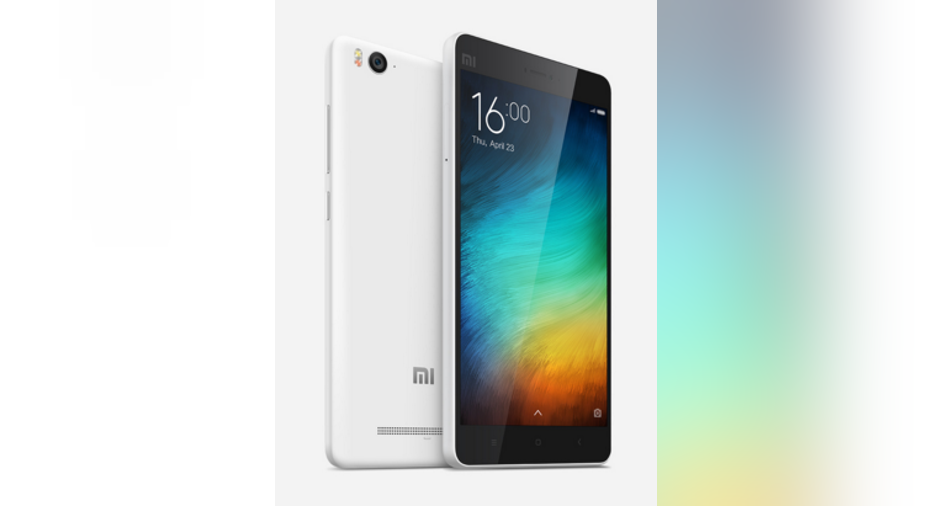The Apple of China Has Crashed Back to Earth

Handset giant Xiaomi isn't looking quite asmenacing.
The firm, which was founded just over five years ago, had experienced rapid growth in recent quarters, soaring to the top of Chinese handset sales charts with attractive, reasonably priced handsets. But 2015 was a year ofdisappointmentfor the company (commonly referred to as the "Apple of China" for itsenthusiasticfan baseandtendencyto mimic the Cupertino tech giant), as it's failedto achieve itsambitioussales targets. Xiaomi remains a threatto rival firms, notablyApple and Samsung , but its recent struggles suggest it isn't as unstoppable as it once appeared.
Xiaomi's Mi4. Image source: Xiaomi.
Underperforming even a modest estimateXiaomi sold 61.1 million smartphones in 2014, up from just 18.7 million in 2013. The company had expected that rapid growth to continue: Early in 2015, it projected that it would sell between 80 million and 100 million handsets over the course of the year. But in January, it announced that it had failed to achieve even its more modest target -- Xiaomi sold just over 70 million handsets in 2015.
That was still good enough to put among the world's top five handset vendors, according to research firm IDC. Xiaomi shipped 70.8 million handsets in 2015, capturing 4.9% of the market. Apple and Samsung, however, were considerably more successful, shipping 231.5 million and 324.8 million smartphones, respectively. To its credit, Xiaomi saw its smartphone shipments rise 22.8% on an annual basis, outperforming the broader market (which rose just over 10%). But it was overshadowed by its Chinese rival, Huawei, which saw its shipments rise a massive 44.3%.
Facing tough Chinese competitionHuawei may be the primary culprit behind Xiaomi's sluggish growth, as both employ a similar strategy and target the same markets, most notably China. Huawei's Chinese handset sales overtook Xiaomi's in the third quarter last year, according to research firm Canalys. Xiaomi and Huawei both sell unlocked handsets that use the Android operating system. They generally retail for around $100-$400, but sport mostly quality components.
This strategy has made their phonesimmenselypopularin China and other emerging markets, but both firms remain generally unknown in the U.S. (though Huawei became the second-largest seller of Android handsets in Europe last year).
With the iPhone occupying a different price bracket, and Apple experiencing solid growth last year, Huawei and Xiaomi likely had much more of an effect on Samsung in 2015, with the Korean tech giant's smartphone sales coming in virtually flat over the year. Still, with China playing an increasingly important role in driving iPhone sales (greater China generated almost one-quarter of Apple's revenue last quarter) Xiaomi and Huawei stand as major competitors.
Xiaomi, in particular, could also pose somewhat of a risk to Apple's nascent wearables business. It captured more of the wearables market last quarter (9.7%) than it did the smartphone market, coming in third place worldwide, according to IDC. Apple sold about 50% more wearables than Xiaomi last quarter, but Xiaomi outsold it over the course of the year. Of course, Xiaomi's Mi Band, which retails for around $15, costs only a fraction as much as the Apple Watch, but Xiaomi could move upmarket in time.
Surging growth moderatesWith Xiaomi experiencing such tremendous growth in 2014, there was palpable fear that the firm could eventually displace Apple and Samsung over time -- not just in China but perhaps throughout the globe. Xiaomi isn't going anywhere (in fact, it plans to expand into western markets in the near future), but in light of its relativelydisappointingyear, the possibility that it could eventually topple the world's leading smartphone vendors is looking increasingly unlikely.
The article The Apple of China Has Crashed Back to Earth originally appeared on Fool.com.
Sam Mattera has no position in any stocks mentioned. The Motley Fool owns shares of and recommends Apple. Try any of our Foolish newsletter services free for 30 days. We Fools may not all hold the same opinions, but we all believe that considering a diverse range of insights makes us better investors. The Motley Fool has a disclosure policy.
Copyright 1995 - 2016 The Motley Fool, LLC. All rights reserved. The Motley Fool has a disclosure policy.